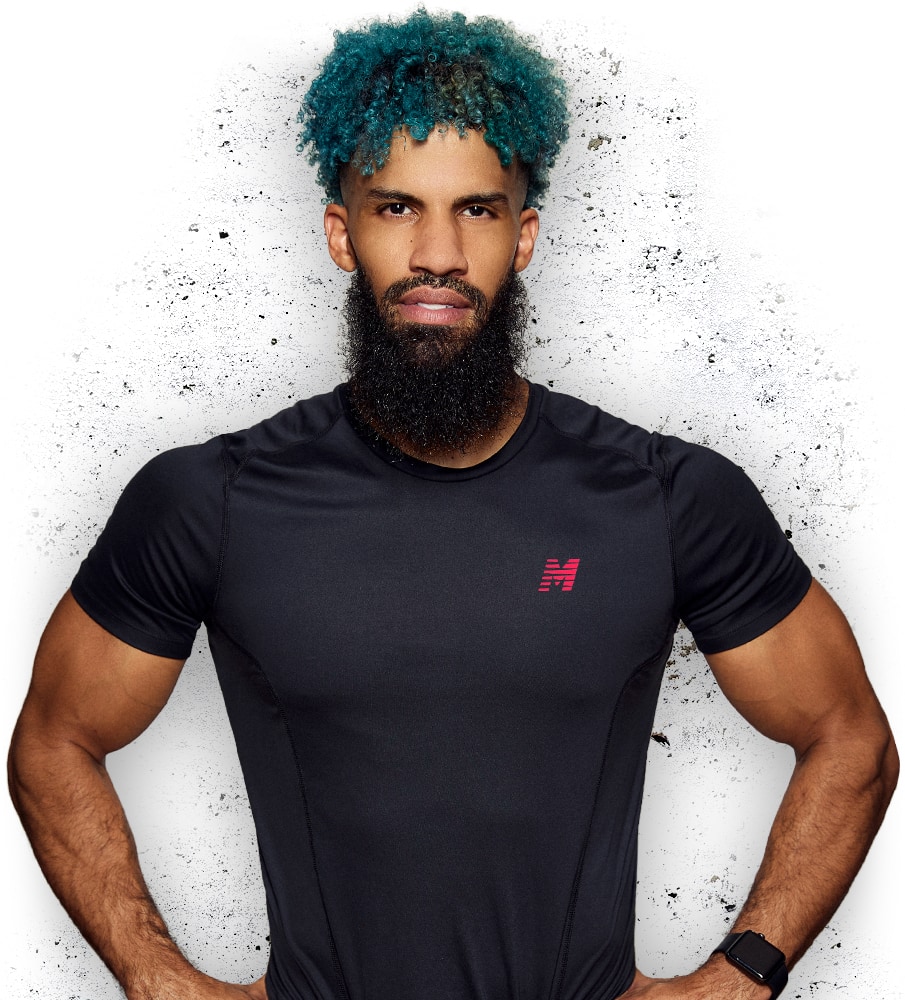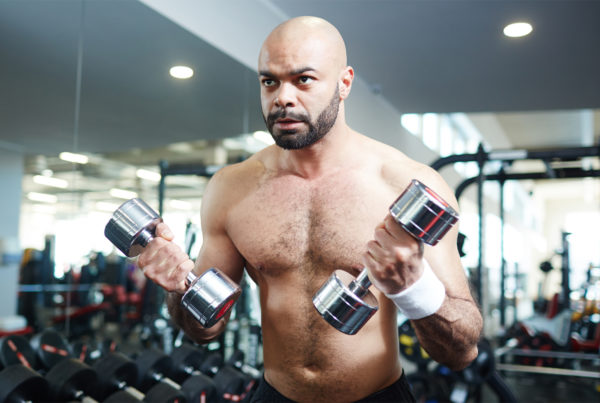Depending on who you ask, the concept of counting calories is either heavily encouraged or bitterly despised. Even nutritionists and dieticians can’t make up their minds, with their opinions often split down the middle as to whether or not calorie tracking is even necessary for your success. So… to track or not to track; that is the question.
The Short Answer:
If you have a clearly defined goal, the answer is yes; calorie counting will be absolutely crucial to your success. In order to be successful on any fitness program, you MUST manage your food intake. And to reach a very specific fitness goal, you’ll need to figure out exactly how much food you should even be eating in the first place to get you there.
Tracking Your Calories Is Important
If you want to achieve the body of your dreams, you need to track your calories — period.
The concept is super simple: Food is energy. If you eat more calories than your body uses for energy, you’ll gain weight. If you eat the same amount as you burn, you’ll maintain weight. Finally, if you eat fewer calories than your body utilizes, you’ll lose weight.
Now that you know the basics, wouldn’t it only make sense for you to know the following:
- exactly how much energy your body uses daily
- exactly how many calories to eat daily in order to reach your goals
By the end of this article, my hope is that you’ll have a complete understanding of what calories are, exactly how many of them you’ll need to eat to reach your specific goal, how to track all of these calories, and an entirely new perspective on food in general.
When you’re done reading, leave a comment down below to let me know if I succeeded with that. And if I didn’t, help me understand why. Constructive feedback from our audience is what makes this blog so special and enables me to write better content. 😃
Here’s exactly what we’ll cover in this article:
Feel free to use the navigation box above to skip ahead at your leisure. However, if you’re relatively new to calorie tracking and want the full scope, continue reading.
Calories 101: Crash Course
Learning about calories and how they affect your physique and goals is actually easier than most people think, which is great because it’s also a vital concept that you need to understand in order to diet successfully.
In fact, neglecting to learn about calories, and food value in general, will only wreak havoc on your long-term goals, overall confidence, and self-esteem, keeping you further away from obtaining the body of your dreams.
Now, if I’m going to be totally honest here, talking about calories isn’t exactly the most “fun” discussion in the world. So, in an effort to keep you entertained while you learn, I’ll try my best to spice things up here and keep things interesting. 😉
The last thing I want to do is bore you out of starting your new diet and achieving your fitness goals. Truthfully, once you grasp this initial concept, you’ll soon discover for yourself that diets can be flexible, fun, and very exciting!
The Calorie Breakdown
By definition:
cal·o·rie
/ˈkal(ə)rē/
noun
the energy needed to raise the temperature of 1 kilogram of water through 1 °C, equal to one thousand small calories and often used to measure the energy value of foods.
If you’re scratching your head right now, you should be. I’m even a bit confused. 😄
The literal definition of the word can make this entire concept begin to sound way more complex than it really is. So, let’s make this a bit easier to understand for those of us who aren’t science lab nerds with super human brains. 🧠
Almost all food contains calories (energy) in varying amounts and these calories are used to fuel the body. You can think of food like the gas you would put into a car. 🚗💨
Your body uses the food you eat as fuel to power you through your activities for the day. Just as a car burns more or less fuel based on distance traveled, your body burns a specific amount of calories based on your daily activity level.
With that being said, even if you were to do absolutely nothing at all for the entire day, such as lay in bed and not move, your body would still be burning calories in order to power all of your vital bodily functions. Amazing, right?
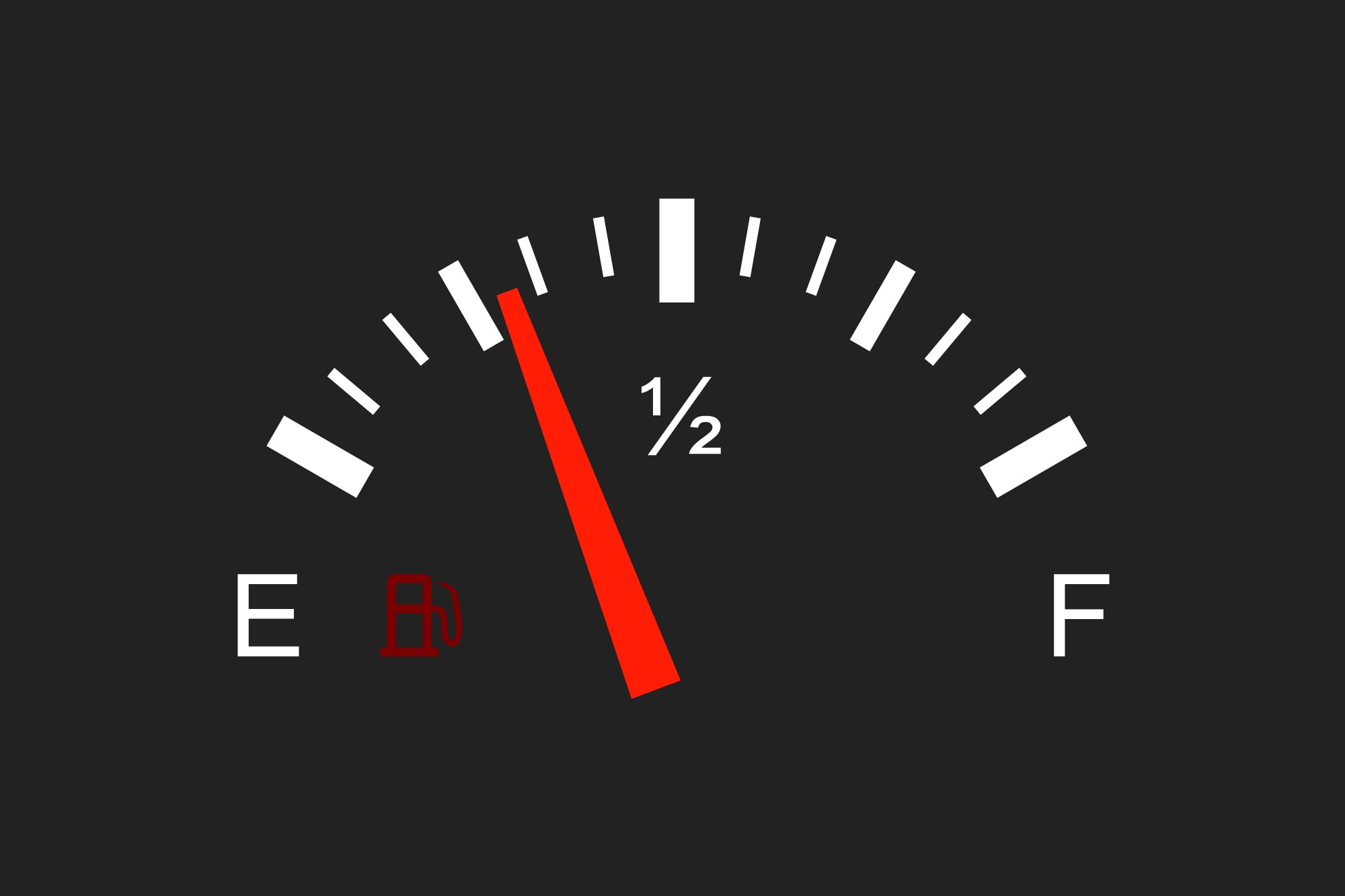
Using the same car analogy, think of this as if you were to have started up a vehicle, left it in park, and just kept it running.
Although the car isn’t traveling any amount of distance whatsoever, it’s still burning fuel to keep the engine running and power the battery, which in turn allows you to operate the wiper blades, power the headlights, play music, etc.
This very concept is what is known as your Basal Metabolic Rate (BMR) and is essentially the minimum amount of calories your body will burn on any given day — without any additional activity (or “travel”) — just to be able to function normally.
This is also what most people are referring to when they talk about the “speed of their metabolism” or their “metabolic rate”. It’s simply the rate at which one’s body utilizes energy, which is faster for some and slower for others.
Note: Notice how I keep using the words food, calories, fuel, and energy interchangeably? Well, that’s because they’re essentially all the same. Moving forward, just remember that food = calories = energy. Simple, right? 👍
Now, the speed at which YOUR body burns calories is dependent upon a number of factors, including your genetics, hormones, activity level, nutrition, exercise, and more.
Here’s the bad news: We don’t have control over set factors, such as our genetics (you can thank your parents and ancestors for that).
Here’s the good news: On the flip side, we DO have 100% control over other factors that CAN improve the rate at which our bodies burn calories.
For example, we can increase our overall metabolic rate by being more active and also by learning how to make more informed decisions when it comes to what we eat, which is partly what we’ll be discussing here today.
Calories In, Calories Out
Next, let me familiarize you with the first law of thermodynamics. Calories In, Calories Out — or as many like to call it, “CICO” — is a term you’ll hear quite often in the health and fitness world and it’s super easy to understand.
As we discussed above, your body burns a certain amount of calories each and every day based on your basal metabolic rate combined with your overall activity level.
Naturally, the more active you are during the course of your day, the more calories you burn; the more sedentary (less active) you are, the less calories you burn.

Here’s where the “in” versus “out” comes into play:
If we burn (output) more calories each day than we consume (input), we will lose weight. If we eat (input) more calories than we burn (output), we will gain weight. Lastly, if we consume roughly the same amount of calories as the amount that we burn, we will stay the exact same weight.
That, my friend, is “Calories In, Calories Out” in a nutshell.
No matter what, your results will always be determined based on this premise.
All diets utilize this principle and simply tweak the numbers based on your BMR, activity level, eating habits, and your fitness goal. We’ll discuss this more in a second; or you can click here to fast forward.
Now, the direct effects of CICO are not noticed on your body right away since these daily changes happen in very small increments, of course, but they do add up over time.
This is why when most people start putting on the pounds, they don’t even really tend to notice they’re gaining weight until — BAM — it hits them in the course of a few weeks or months. 😲
This is also why the journey to fat loss and muscle gain will ALWAYS be a marathon and NEVER a sprint. Being patient and realistic is key.
Just remember: The amount of calories you take in (food + diet) over an extended period of time, minus the amount of calories you put out (BMR + activity) is ultimately what determines what you look like and how much you weigh.
Calorie Spillover
Now that we understand the “Calories In, Calories Out” concept, let’s jump back into our car analogy for a second.
We put food into our body the same way we put fuel into a vehicle’s gas tank, right? And the amount of fuel burned will depend on how active we are or how much driving we’ve done during the course of the day.
Now, here’s where things switch up a bit. If your gas tank is full to the max and you tried to put more gas in the tank, the gas would simply begin spilling out all over the floor. That’s what is known as “spillover”.
Your body works in the exact same way, except the spillover of extra food doesn’t end up on the ground. Fortunately (and kind of unfortunately), our bodies are smarter than that and won’t let the excess food just go to waste.
Instead, the spillover of extra calories ends up being saved for later use in the form of stored energy; or more commonly and unfavourably known as body fat.
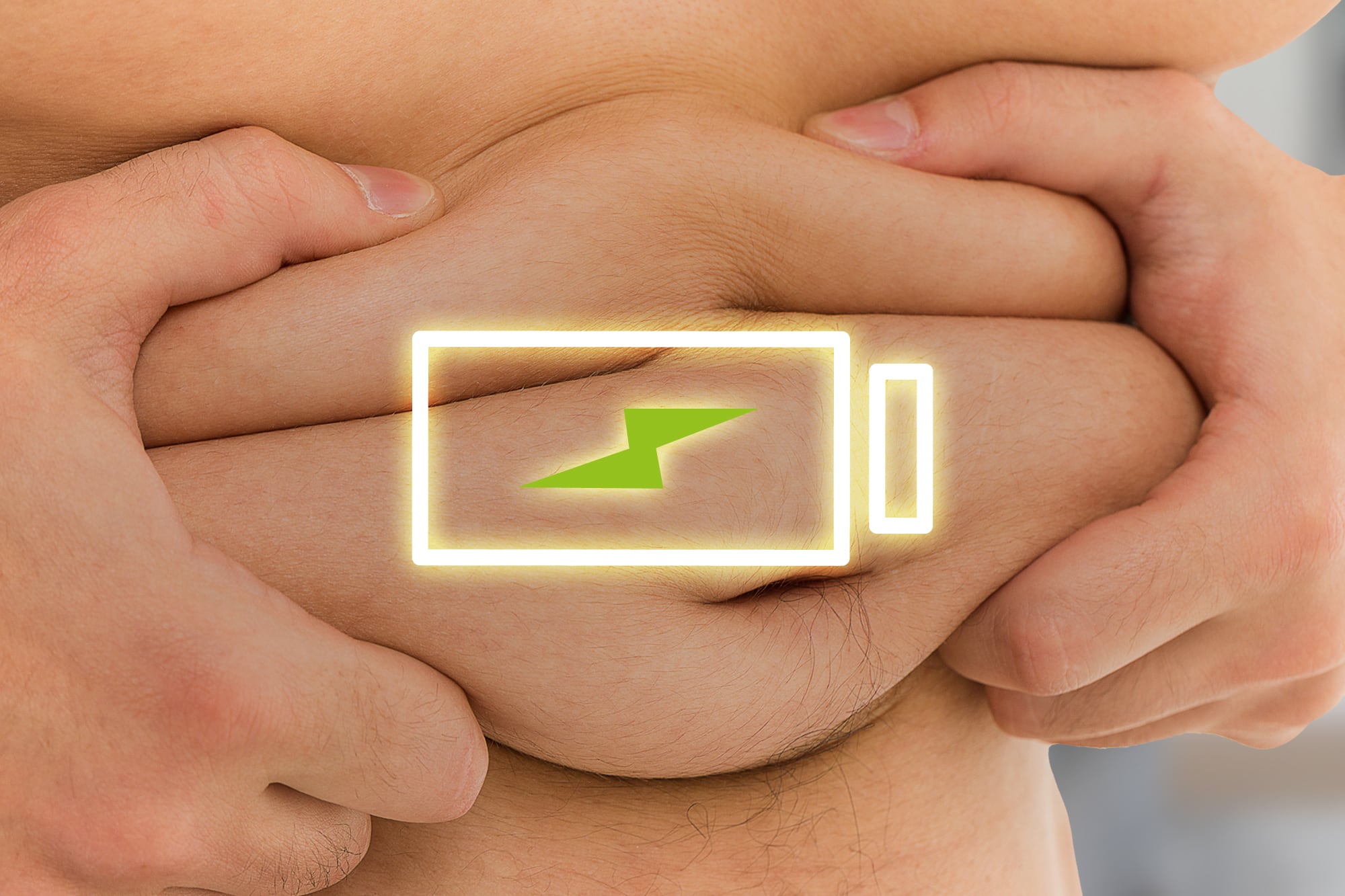
Yup! Think of all that fat being stored around your midsection as a powerful backup battery. 🔋 That’s stored food! And it’s actually pretty nifty technology if you ask me!
Just think… if you were ever without food for a few days or weeks or months even, your body would have the potential to keep you alive by using all of your stored fat as energy.
However, if you’re not having a food shortage problem, then you probably don’t need your body holding on to all of that extra fat. In order to prevent this from happening, we need to understand the three caloric states.
Understanding the Three Caloric States
In order to prevent calorie spillover or use it to your strategic advantage — for example, if you wanted to gain lean healthy weight — you need to understand the three caloric states:
- caloric deficit (eating less than you burn daily)
- caloric surplus (eating more than you burn daily)
- calorie-neutral (eating equal to what you burn daily)
As we discussed earlier, if you eat fewer calories than your body utilizes, which puts you into a caloric deficit, you will lose weight.
If, instead, you eat more calories than your body uses for energy, that means you’re in a caloric surplus and you will gain weight.
Finally, if you eat the same amount of food value as you burn, you will be calorie-neutral and therefore you will maintain weight.
So, as of right now, something should be crystal clear:
The amount of calories or food that you eat on a daily basis should be goal-specific.
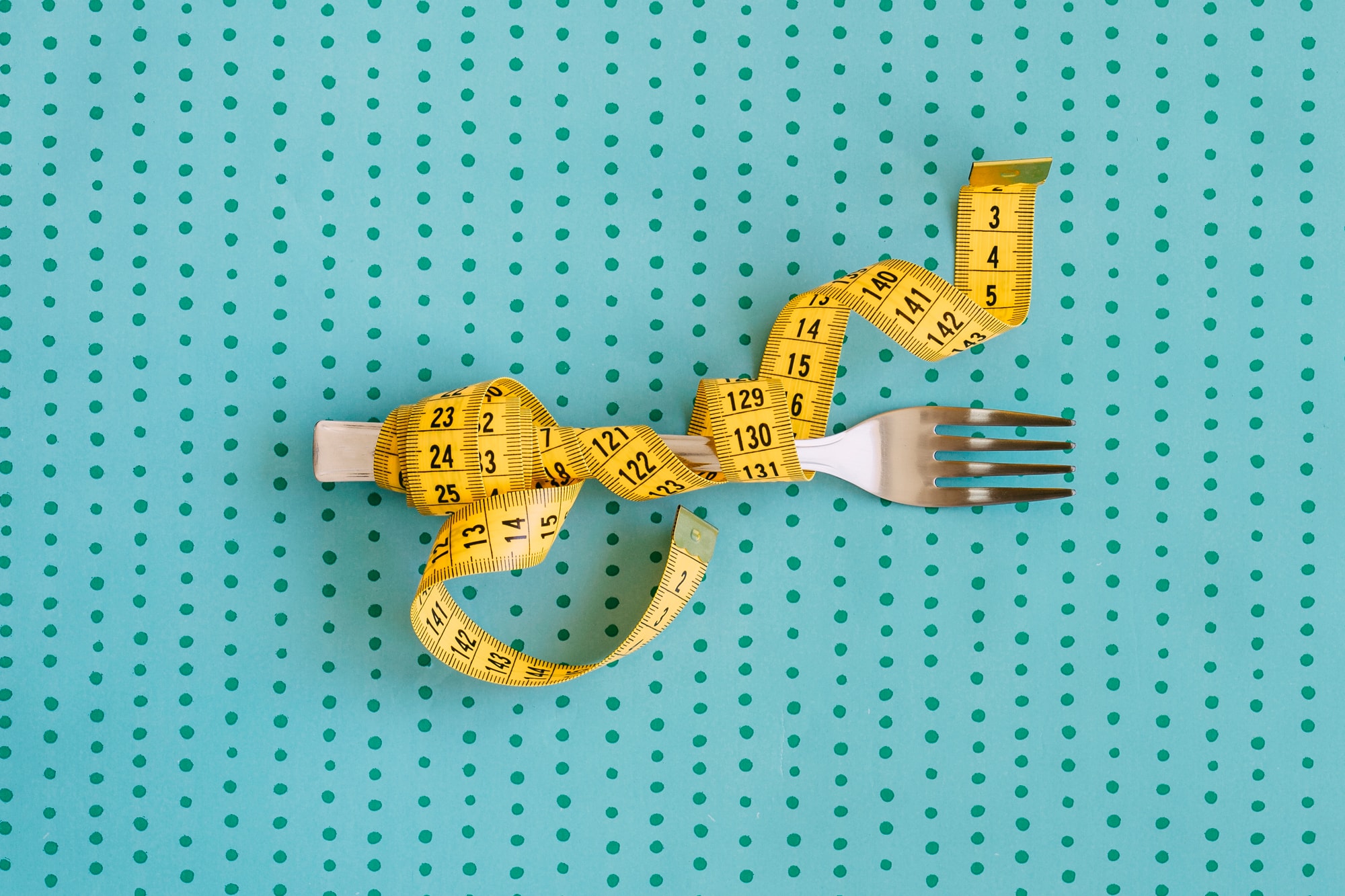
If you don’t have any goals, you’ll be working towards nothing and consuming food aimlessly, and it won’t be long before your body begins to reflect that.
On the other hand, if you have clarity on your goals, you’ll be eating with purpose.
So, ask yourself: “What is my current goal?” Need help goal setting? Click here. ?
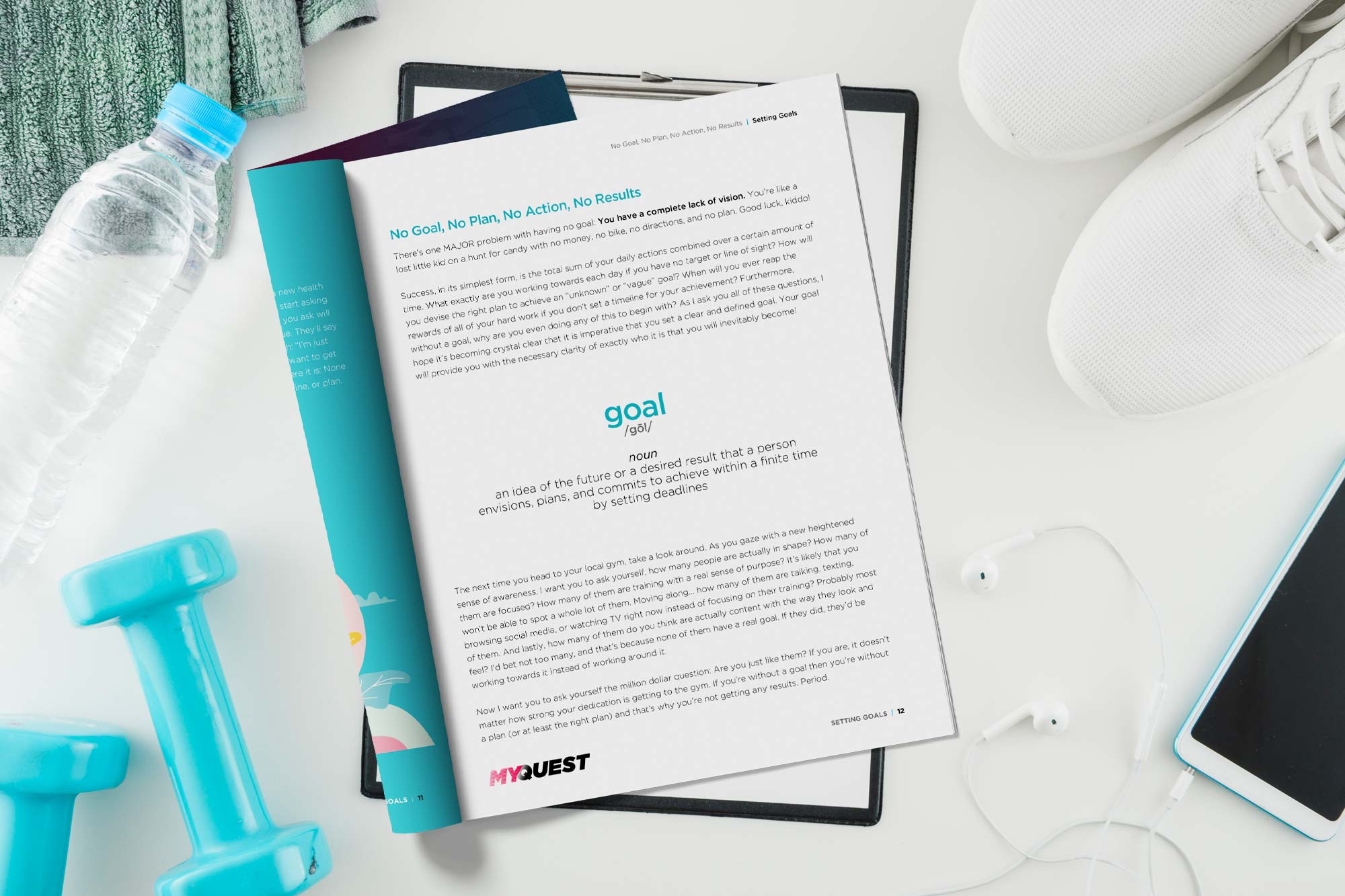
Need help finding clarity on your goals?
Download our free Mindset Guide! You’ll learn: How to set meaningful goals and why it’s so important for your success.
We 100% respect your privacy and will never, EVER, share your personal information or spam you — no B.S.
Once you’ve decided on a goal, things get really simple. If your primary aim is to:
- lose weight and burn fat, you must be in a caloric deficit
- maintain weight or enhance your physique, you must be calorie-neutral
- gain weight and build muscle, you must be in a caloric surplus
Now the only thing left to figure out is exactly how many calories you should be consuming each day to achieve your goal and how to manage your food intake.
How Many Calories Should You Eat?
Now that you have a the foundational understanding of what calories are and how they will affect your body weight and goals, let’s discuss how we can put this knowledge to good use and help you reach your goals.
Daily Caloric Allowance
Your daily caloric allowance — AKA the amount of food you’re required to eat to reach your goal — is determined by a number of various factors, but the most important ones are as follows:
- Body Weight — This one is fairly straightforward. Generally speaking, the heavier you are, the more food you are required to eat. That rule is consistent whether you’re trying to A) lose weight; B) maintain weight; or C) gain weight.
Age — As you grow wiser, your total amount of muscle mass decreases, which leaves fat to account for slightly more of your total body weight. This is also why resistance training becomes such an important part of your exercise routine as you get older.
Muscle tissue is metabolically more active than fat and therefore burns more calories than fat. The decrease in muscle mass as you age reduces your body’s metabolism and overall calorie burning potential.
Gender — Due to varying hormone levels, men naturally have the ability to produce and maintain more muscle mass than women of the same age and weight. As a result, women typically carry around more fat than men do.
As previously explained in the point above, the higher ratio of fat to muscle leaves women at a slight metabolic disadvantage. So, generally speaking, men burn more overall calories than women do.
Daily Activity Level — What do you do for work has a significant effect on your total daily calorie expenditure. If you’re an office worker with a desk job that involves sitting all day, then your daily activity level will be quite low.
Are you a postman, construction worker, waiter or waitress that is constantly standing and moving around all day? These types of jobs are physically taxing and burn lots of calories.
Are you a bank teller or a busy hairstylist and required to be on your feet for some of the day? Well, then you’d be somewhere in between, of course.
Physical Activity Level — On days that you’re moving around a lot, playing sports, or exercising, you’ll obviously be burning a lot more calories. Therefore, your calorie requirements for the day / week will be higher than times when you are inactive.
In addition, if you are resistance training or exercising intensely, your body is going to require additional food and nutrients to help build and recover from your workouts.
Determining Your Caloric Requirements
By now, it should be pretty obvious that you need to know exactly how many calories you need to eat daily to successfully reach your goal.
If you’re anything like the average person, then I’m willing to bet you have absolutely no idea how to figure out how many calories to eat.
Rather than give you a set of complex formulas to work with and have you calculate everything all by yourself, let me make it just a little bit easier for you.
All you have to do is use our Calorie Calculator. 👈
Plug in your specs and it’ll pump out the exactly number of calories you should eat based on the variables I just explained. Best part? It literally takes 60 seconds to figure out.
Calorie Calculator
Want to know exactly how many calories you need to reach your fitness goal? We’ve got a calculator that does that for you!
All done? Awesome. Moving along. 👍
The Golden Rule
Now that you know exactly how many calories to consume each day, you must learn something that is absolutely imperative to your success.
There is only ONE simple rule you need to follow as a beginner:
You MUST track ALL of the food (calories) you put in your mouth.
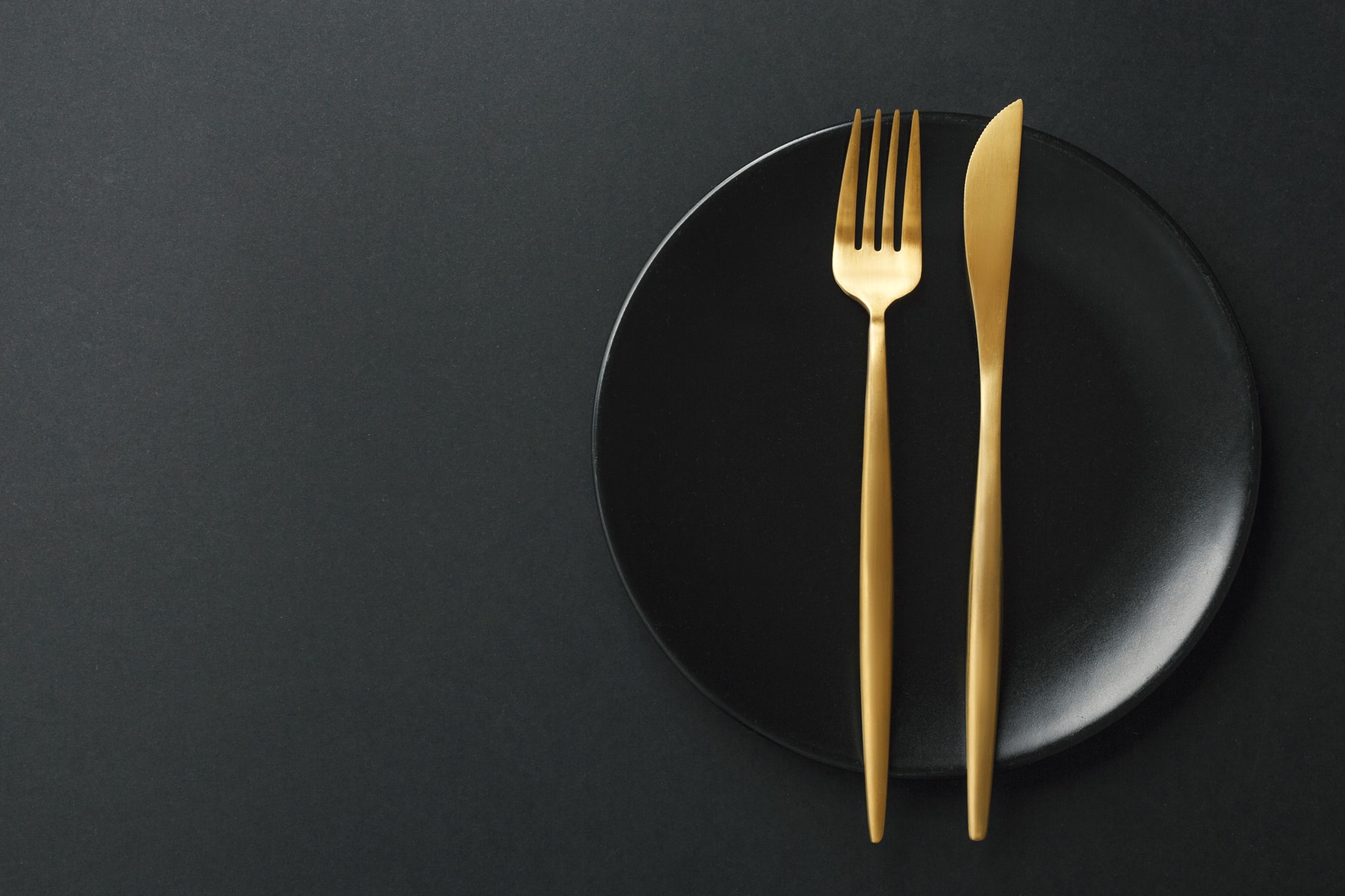
This rule applies irregardless of what diet you’re on.
And just in case you’re still wondering, “Do I really have to track my calories?” 🤔
The answer is simple: yes.
One of the biggest mistakes you can make while dieting, especially as a beginner, is thinking that you don’t have to track every single thing that you eat.
The “I’m pretty sure I don’t have to count everything” mindset is a surefire way to fail on any diet, as you begin feeling like you can just “get away” with things like:
- having an extra scoop or two of mashed potatoes at dinner time
- eating just a “tiny little” piece of chocolate cake for dessert
- slathering your toast with peanut butter for breakfast
- eating an extra fruit or two because they’re “healthy” for you
… and the list goes on.
Just in case you forgot, it’s Calories In, Calories Out, remember?
As you’ll learn in a moment, these “harmless” little actions add up quite quickly and will undoubtedly lay waste to your goals, ESPECIALLY when you’re trying to lose weight.
Of course, as you become more experienced with living a healthier lifestyle, your diet and eating habits will become much more natural and intuitive to you.
Until then, I repeat: You MUST track ALL of the food you put in your mouth.
Managing Your Caloric Intake
Now that you have the exact number of calories you need to eat daily in order to reach your fitness goal, and the number one rule for success, all you’ve got to do is make sure that you actually adhere to the plan.
In other words, you need to learn how to calculate the calories in your food and then track your caloric intake so you don’t break The Golden Rule.
Let’s dive in:
Calculating the Calories in Food
Many people are reluctant to want to learn how to count and track their calories simply because they anticipate the process to be too challenging or tedious.
In case this wasn’t clear, we’re just calculating calories here, people; this isn’t calculus!
With the right tools, calculating the calories in the food you eat is actually not a difficult task at all; especially once you get the hang of it.
Eventually you’ll become so efficient at counting and tracking your calories, that you’ll start seeing your food in numbers; much like Neo in the famous movie, The Matrix.
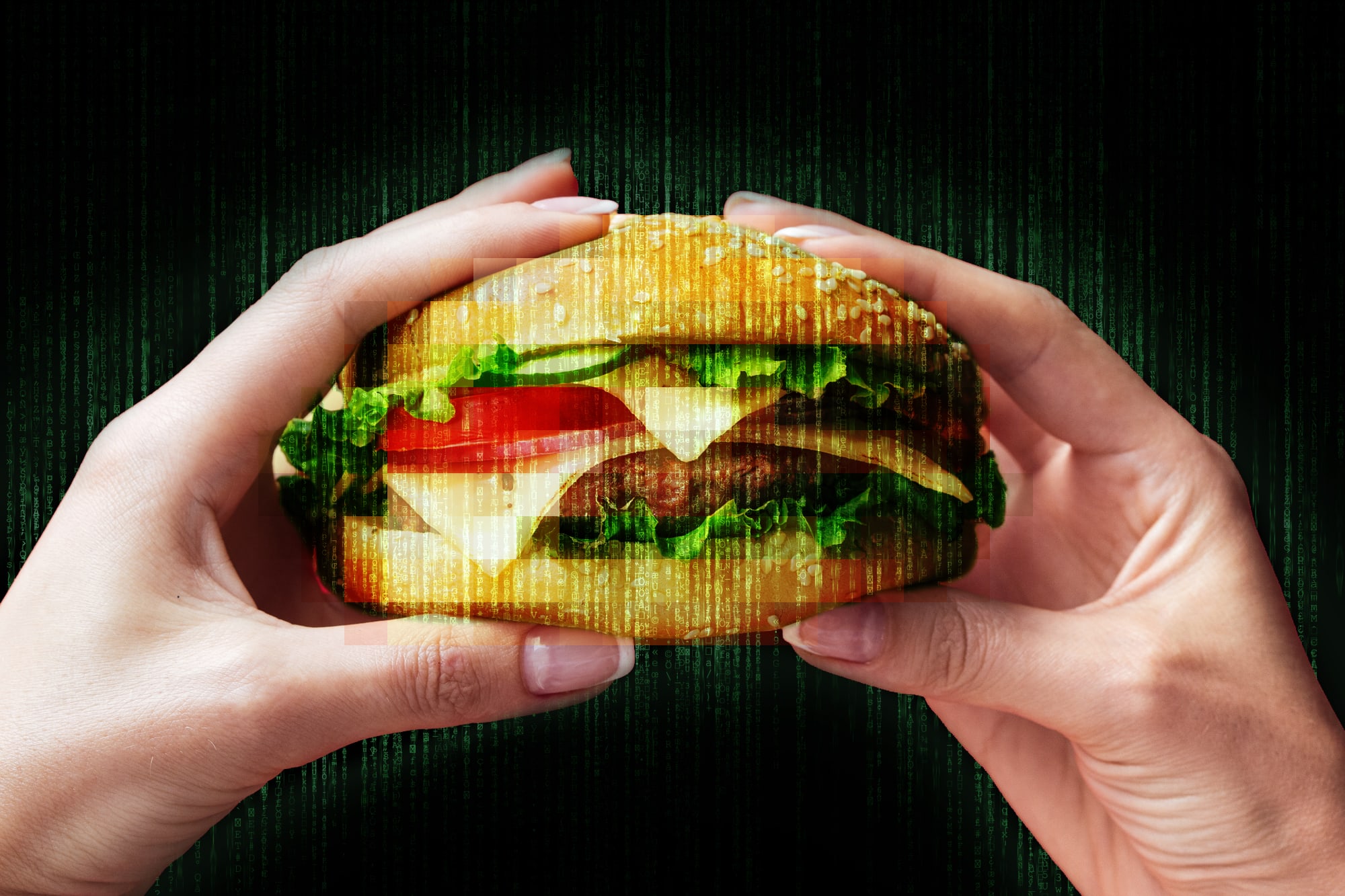
As you become more familiar with serving sizes and the overall nutritional value of your favourite foods, you will eventually be able to calculate the caloric value of most items using nothing more than your eyes and your memory bank.
But until that happens, you’ll need to learn the basics.
There are essentially only 3 tools that are required to calculate the total amount of calories in any given food that you eat. Here they are:
1. Nutrition Labels
This one should be obvious, but most people either ignore products labels or are completely oblivious of them altogether. Nutrition labels are on the majority of the foods you buy for a number of reasons — one of them is so that you can track your calories!
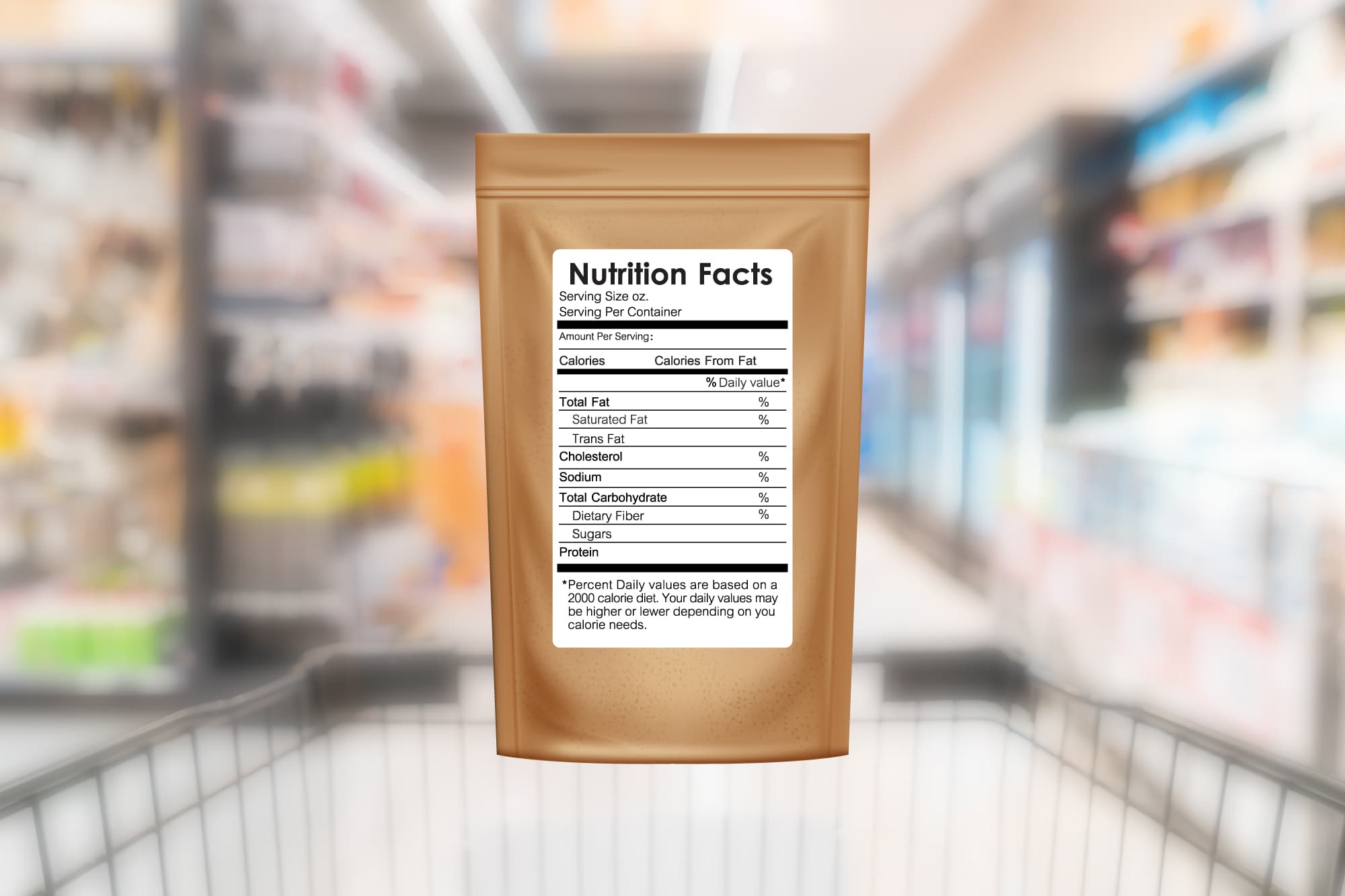
These labels are also helpful for discovering all of the good, the bad, and the ugly stuff that’s in the food BEFORE you buy it. Start getting in the habit of reading the nutrition facts, as this will help you make more informed purchase decisions moving forward.
In most cases, you can use nutrition labels alone to dissect the total calories in a single serving, such as ⅓ cup of cashews, 1 tablespoon of honey, or 1 slice of bread; however, in other cases, you might only be given a weighted serving amount, which will be immeasurable UNLESS you own tool #2 — a food scale.
2. Food Scale
This tool is an absolute necessity when it comes to tracking calories; this is the case whether you’re a complete novice or a calorie tracking ninja. Also, this is the only tool of the three that has a cost associated with it, which can range anywhere from $10 to $50+ depending on the features.
If you already own a food scale, great! If you don’t, you’ll only need one with the most basic feature — the ability to calculate and display food weight. With that in mind, you can stick to the lower $10 to $20 price range when shopping around for one.
Here’s a great video from SoheeFit explaining exactly how to use a food scale and why measuring with just your eyes can be so deceiving. Check it out below:
Your food scale will help you in two unique scenarios:
Weighted Serving Amounts — Certain food items, such as a package of chicken breast, won’t have a measurable serving size listed (e.g. 1 cup or per breast), simply because all of the packaged breasts will range in size and volume.
In addition, it wouldn’t be very practical to stick a whole chicken breast into a measuring cup to determine its volume. In these scenarios, you will be given nutritional information based on a weighted serving amount (e.g. per 4oz or 100g).
Without a food scale, you would be unable to accurately weigh the chicken breast and therefore you’d be unable to calculate the calories based on the weighted amount shown on the label.
No Product Label — You’ll also need a food scale when you need to track an item and there is no physical label present. You will run into this issue with items such as: fruits and vegetables, cuts of meat, bulk food items, etc.
In these scenarios, you can use your scale to calculate the weighted serving size of any given food item. For example, you might plop an avocado onto the scale and find out that it weighs 150g.
From there, you might even want to divide that avocado into two servings. Now you just need to find out how many calories there are in 75 grams worth of avocado… which leads us to tool #3 — a food database.
3. Food Database
A food database is particularly helpful in one scenario: When you know the weight of a specific food, but there is no product label present. Sounds like a huge mystery, right? Well, not quite, Sherlock. 🧐

With technology advancing so quickly these days, there are a number of ways to determine the caloric value of any food in almost an instant. Here are two of my favourites:
Google Search — You can type just about any food item into Google to quickly find out the caloric value. All you have to do is perform a simple query: “How many calories in chicken breast?” Easy, right? 🙂
Don’t believe me? Go ahead and type that into a Google search bar right now, and hit enter. It’ll spit out all the nutritional facts including the calories and much more!
MyFitnessPal — If you’re a little bit more tech savvy and enjoy using apps, then I’d highly recommend giving MyFitnessPal a whirl.
Not only does it contain an extraordinarily large food database, it also allows you to be able to effortlessly track your calories at the same time, which we’ll get into in just a bit.
To calculate the calories of an item, you simply type the name of the food item in the search bar and hit search. From there, you’ll see numerous results show up; all you have to do is select the one that’s most relevant and applicable to your item.
Track Your Calories Like a Pro
Now that you’ve learned how to weigh and measure your food to calculate the total calorie amounts, next you’ll need a means of tallying everything up.
There are two simple and efficient ways of tracking the amount of calories you’ve eaten for the day; the old school way and the new school way. Here’s a look at both:
1. Pen and Paper
Every time you finish a meal, write down the total number of calories for that meal! You can keep a notepad handy for this or even use the notes app built right into your smartphone.
To simplify things further, you can even divide your meals up throughout the day and put them into categories, such as: Breakfast, Lunch, Dinner, Snacks, etc.
This becomes ultra handy when you tend to eat the same meals frequently throughout the week, as you can quickly reference the data and copy it over. Easy enough, right?
Well, just in case that isn’t easy enough, I’ve decided to make things even easier for you by creating a simple Calorie Tracking Worksheet. 👈
Want an easier way to track calories?
Track your calories like a PRO with our Calorie Tracking Worksheet! Download it for FREE by clicking the button below:
We 100% respect your privacy and will never, EVER, share your personal information or spam you — no B.S.
All you have to do is punch in the calories per item/meal, add up your totals, and that’s it!
Something to note: I’m a HUGE advocate of flexible dieting, so I’m not going to tell you exactly how to structure your eating for the day; the choice is ultimately yours.
You don’t necessarily have to eat three full meals per day. In fact, you’re welcome to eat as many meals as you’d like! Heck! You can even eat just snacks if you want to!
Do what works best for you! Just remember to follow the Golden Rule.
2. Using an App
I love apps! They can make certain tasks so easy and tracking your calories is one of them. As mentioned a while ago, I highly recommend the MyFitnessPal App.
It’s available for both iOS and Android, and best of all, it’s free! There’s a paid version which unlocks more features, but most people will do just fine with the free version.
Each individual item or meal that you add is automatically tallied up for you, giving you the exact amount of calories that you’ve consumed to that point and how much you have left for the day.
Here’s a sneak peek at the app in case you’re interested:
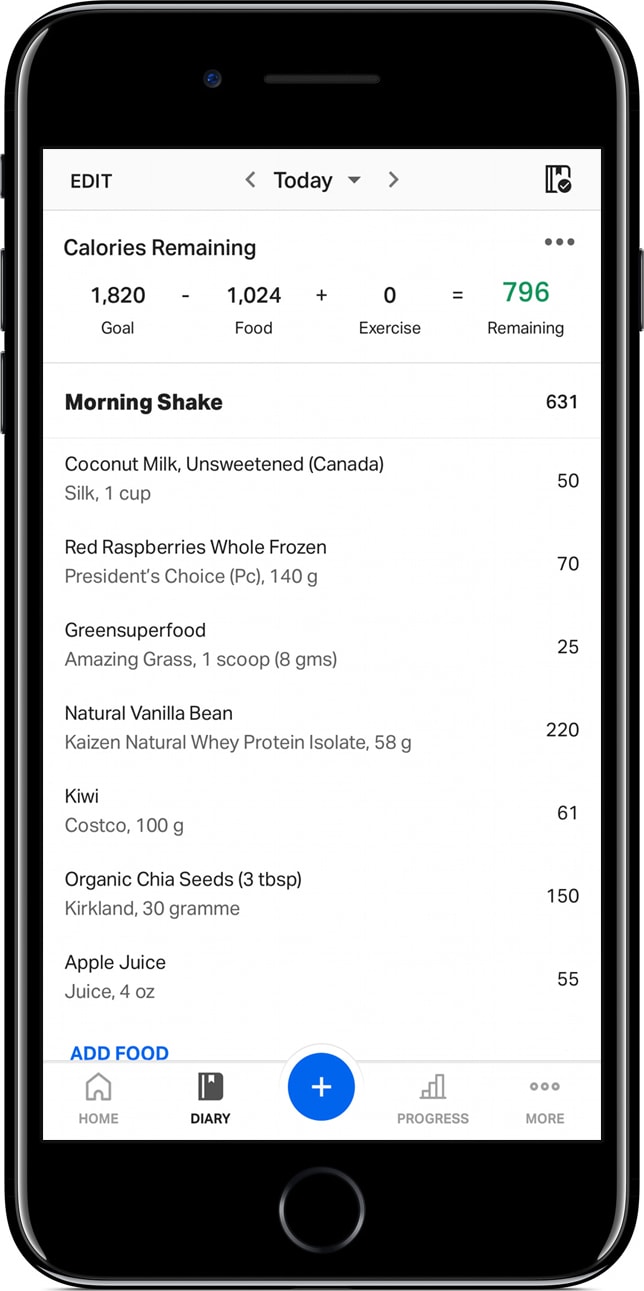
Track Food Intake
MyFitnessPal allows you to easily and effortlessly track your daily food intake on your phone, tablet, or smart watch while on the go.
Nutrient Tracking
If you're into tracking your macros and other food nutrients, the app calculates all of this for you automatically with zero fuss.
App Integration
MyFitnessPal integrates with other popular health apps such as Apple Health, FitBit, and more. It's even compatible with Amazon Alexa.
Extensive Food Database
MyFitnessPal has one of the largest searchable food databases out of any tracking app. You can even scan food items by their barcode.
Track Food Intake
MyFitnessPal allows you to easily and effortlessly track your daily food intake on your phone, tablet, or smart watch while on the go.
Nutrient Tracking
If you're into tracking your macros and other food nutrients, the app calculates all of this for you automatically with zero fuss.

App Integration
MyFitnessPal integrates with other popular health apps such as Apple Health, FitBit, and more. It's even compatible with Amazon Alexa.
Extensive Food Database
MyFitnessPal has one of the largest searchable food databases out of any tracking app. You can even scan food items by their barcode.
App Integration
MyFitnessPal integrates with other popular health apps such as Apple Health, FitBit, and more. It's even compatible with Amazon Alexa.
Extensive Food Database
MyFitnessPal has one of the largest searchable food databases out of any tracking app. You can even scan food items by their barcode.
P.S. I don’t get paid any commissions for recommending this app. I just think it’s really useful! If you want to track your calories efficiently, then download it!
MyFitnessPal is suited for beginners, intermediate, and advanced dieters alike. In fact, I still use this app til this day and I’d consider myself a calorie tracking ninja at this point in life.
The highly extensive searchable database and ability to scan items via barcode makes tracking food intake an absolute breeze.
I haven’t created an article on exactly how to use this app because it’s extremely user-friendly. However, if it’s something you’d like to see, leave a comment down below and I may just consider writing a comprehensive how-to article.
Until then, if you want a quick tutorial, here’s a great video from Remington James:
The Bottom Line:
Managing your caloric intake may seem daunting at first, but it’s gotta be done! And with a little practice you’ll be tracking your calories like a pro in no time.
It’s Time to Bring It All Together
At this point, you should have a really good understanding of everything “calories”.
With that being said, I hate to be the bearer of bad news, but here it is anyway: managing your calories is only half the battle! Maybe less!
Now you’re probably saying, “OMG! Are you frickin’ kidding me right now?!” 🤬
Unfortunately, no; I’m not. 😄 But you kinda knew that already, no?
You see, not all food is created equal. Just because something is low in calories, it doesn’t mean that it’s “healthy” or that it makes it a good food choice.
On the flipside, just because something is high in calories, it doesn’t mean that it’s “unhealthy” or that it makes it a bad food choice.
Unfortunately, proper nutrition is just a taaaaaaaddddd more complex than that.
In that same breath, does any of that even really matter? Healthy calories versus unhealthy calories, that is?
Well… yes and no. 😄
Wait, wait! Before you fly off the handle, to understand exactly what I’m talking about, you might want to check out this article: What Is Flexible Dieting and Does It Even Work? 👈
In fact, you should ABSOLUTELY check out that article because an understanding of flexible dieting will change your life for the better and is probably the answer to most of your dieting struggles.
Need Some Help With Your Diet?
Are you scratching your head right now completely overwhelmed and confused wondering how the heck you’re going to figure this all out on your own? Don’t stress.
Not sure where to begin? Let us help you discover your path to better health.
In our MyQuest Coaching program we perform a comprehensive needs assessment and then build you a fully-customized fitness program tailored to your every need.
This takes all of the guesswork out of building out a nutrition program as a beginner or intermediate dieter.
This also includes the implementation of a completely flexible diet utilizing all of the principles surrounding calories that we discussed here today.
If this sounds interesting to you, click one of the buttons below to get started:
Apply for Coaching TODAY!
Because yesterday you said tomorrow.
Final Thoughts
“At the end of the day, calories aren’t really that important because…”
I still always chuckle to myself (inside obviously) when someone starts a sentence off like this… for the simple fact that it’s just plain silly to argue against thermodynamics.
Now that you’ve completed your crash course in calories, I hope that I was able to open your eyes to just how important they are for your success.
The concept of calorie tracking is tried, tested, and true. Just ask anyone you know with a hot bod; they’ll be the first to tell you. 💪😏
Although thousands of researchers, nutritionists, dieticians, medical doctors, and scientists alike have tried to disprove this, it always comes back to one simple thing: calories count and they can’t be ignored.
I can guarantee that your newfound knowledge and awareness of calories will have a HUGE and majorly positive effect on how you perceive food and choose your meal options moving forward.
I’m interested: What are your thoughts? Are you an advocate of calorie-counting or are you one of the people who despise of it? If you’re the former, just how important is tracking calories when it comes to your diet and/or lifestyle? If you’re the latter, what is your alternative strategy to calorie management? Leave a comment down below and let me know!




